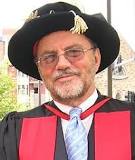
34th International Workshop on
Water Waves and Floating Bodies
7-10 April, 2019
Noah's on the Beach, Newcastle, NSW
Tuck Fellowship

The Tuck Fellowship is intended to support participation in the IWWWFB by a student or young researcher. All standard requirements for IWWWFB participants must be followed, including submission of an extended abstract following the instructions provided on this site. In addition to the abstract, applicants should submit a letter (no more than 500 words in length) including a brief description of the applicant's background, age and a budget of travel and registration expenses to participate in the IWWWFB. In the event of joint authorship of the abstract, the accompanying letter should explain the role of the applicant in performing the research, writing the abstract, and presenting the work at the Workshop if it is accepted.
Eligibility for the Tuck Fellowship is restricted to those students who are currently registered in appropriate university research degree programs and to young researchers who have completed such a degree within the three years prior to application. Applicants who do not meet these requirements may be considered at the discretion of the IWWWFB Selection Committee.
Selection of the recipient will be made by the IWWWFB Selection Committee which reviews the abstracts and selects the participants in the Workshop each year. Their decision will be based on the quality and originality of the submitted abstract, and on the background information contained in the accompanying letter. The Selection Committee will recommend the recipient, and the amount of the award, to the School of Mathematics at The University of Adelaide. A second alternate candidate may also be recommended if the first selected recipient is not able to attend.
More information about the Tuck fellowship and about Prof Ernie Tuck
2019 Winner of the Tuck Fellowship
The 2019 Tuck Fellowship is awarded to Amin Ghadirian for his abstract Initial experimental validation of a pressure impulse model for a vertical circular cylinder This work concerns the slamming phenomenon, which relates to highly complicated wave-ship interactions. The goal of the work is to model the slamming event as an impulse rather than a highly complicated time-varying hydrodynamic process.
Second place was awarded to Dylan Barratt for Directional Energy Transfer due to Third-Order Interactions during an Extreme Wave Event The author was investigating resonances in irregular cross-spread seas. They used a nonlinear potential flow solver and were able to find what they were looking for – the development of cross-wave resonances.
